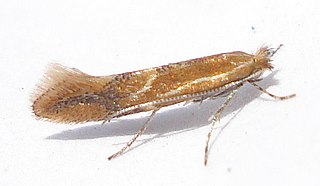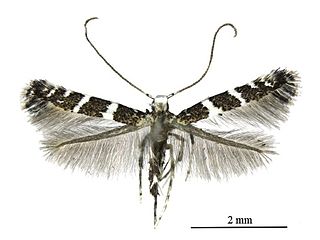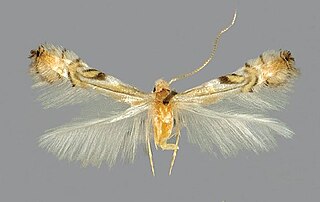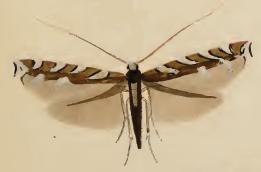
Phyllonorycter is a genus of moths in the family Gracillariidae.

Telamoptilia is a genus of moths in the family Gracillariidae.

Epicephala is a genus of moths in the family Gracillariidae.

Phyllocnistis is a genus of moths in the family Gracillariidae.

Aristaea is a genus of moths in the family Gracillariidae.
Conopomorpha is a genus of moths in the family Gracillariidae.
Cuphodes is a genus of moths in the family Gracillariidae.

Phrixosceles is a genus of moths in the family Gracillariidae.
Spulerina is a genus of moths in the family Gracillariidae.

Stomphastis is a genus of moths in the family Gracillariidae.

Parectopa is a genus of moths in the family Gracillariidae.

Dialectica is a genus of moths in the family Gracillariidae.
Eteoryctis is a genus of moths in the family Gracillariidae.

Macarostola is a genus of moths in the family Gracillariidae. The genus was erected by Edward Meyrick in 1907.
Melanocercops is a genus of moths in the family Gracillariidae.

Stomphastis thraustica is a moth of the family Gracillariidae. It is known from Democratic Republic of Congo, Congo, Central African Republic, Ghana, Nigeria, Namibia, Zimbabwe, South Africa, Madagascar, Malaysia, Indonesia and India. It was recently also recorded from China.
Phyllocnistis rotans is a moth of the family Gracillariidae, known from Ecuador. It was described by E. Meyrick in 1915.
Phyllocnistis sexangula is a moth of the family Gracillariidae, known from Peru. It was described by E. Meyrick in 1915.

Gracillariinae are a subfamily of moths which was described by Henry Tibbats Stainton in 1854.








